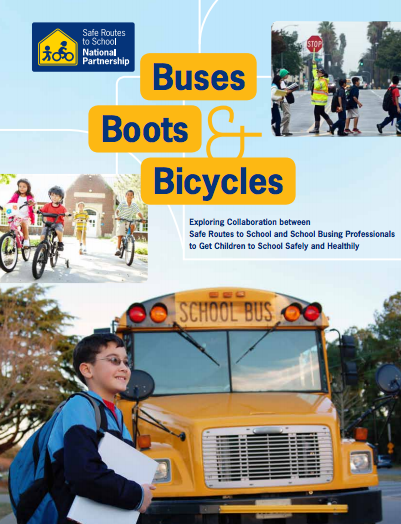New Rural Resources
Can rural roads be good places to walk and bicycle? Why yes, they certainly can! My daughters got their first bicycles when they were five or six. They loved the bikes – but they couldn’t ride them. Because the streets in our small city were a little too busy for crazily uncoordinated families with bicycles and small children, we would drag ourselves, the girls, and the bikes over to the park every couple weeks. We would run around awkwardly holding the bicycle seats and trying to prevent the girls from crashing to the ground. While this did succeed in providing the whole family with


 Just in time for International Walk to School Day, a
Just in time for International Walk to School Day, a  The Greek philosopher Thales and the Roman poet Juvenal both wrote about the way in which physical health and mental health are intertwined, seeking the ideal of a “
The Greek philosopher Thales and the Roman poet Juvenal both wrote about the way in which physical health and mental health are intertwined, seeking the ideal of a “ As many Americans are enjoying their summer vacations, it’s a good time to look at studies on the tourism and economic benefits that bicycle- and pedestrian-friendly infrastructure can generate. While this may not seem immediately relevant to our day-to-day work of making schools and neighborhoods safer for walking and bicycling, policymakers can be strongly influenced by economic arguments.
As many Americans are enjoying their summer vacations, it’s a good time to look at studies on the tourism and economic benefits that bicycle- and pedestrian-friendly infrastructure can generate. While this may not seem immediately relevant to our day-to-day work of making schools and neighborhoods safer for walking and bicycling, policymakers can be strongly influenced by economic arguments.  Today, most student transportation departments around the country focus primarily on getting students to school on yellow school buses. But student transportation isn’t just about school buses. Students are also getting to school by foot, bicycle, car, and public transportation.
Today, most student transportation departments around the country focus primarily on getting students to school on yellow school buses. But student transportation isn’t just about school buses. Students are also getting to school by foot, bicycle, car, and public transportation.
 Southern cities and states are among our nation’s most dangerous places for walking. According to
Southern cities and states are among our nation’s most dangerous places for walking. According to 

 As the 2013-14 academic school year ends, report cards are issued across the country. Grades in academic courses, physical education and the arts can lead to celebrations of achievement, or discouragement about not making the grade.
As the 2013-14 academic school year ends, report cards are issued across the country. Grades in academic courses, physical education and the arts can lead to celebrations of achievement, or discouragement about not making the grade. Richard Louv coined the term “nature-deficit disorder,” in his award winning book Last Child in the Woods: Saving our Children from Nature-Deficit Disorder. He recounts how children are spending progressively less time outdoors in free, unstructured play, and how wide-ranging the negative repercussions might be as children disconnect from the natural world.
Richard Louv coined the term “nature-deficit disorder,” in his award winning book Last Child in the Woods: Saving our Children from Nature-Deficit Disorder. He recounts how children are spending progressively less time outdoors in free, unstructured play, and how wide-ranging the negative repercussions might be as children disconnect from the natural world. 